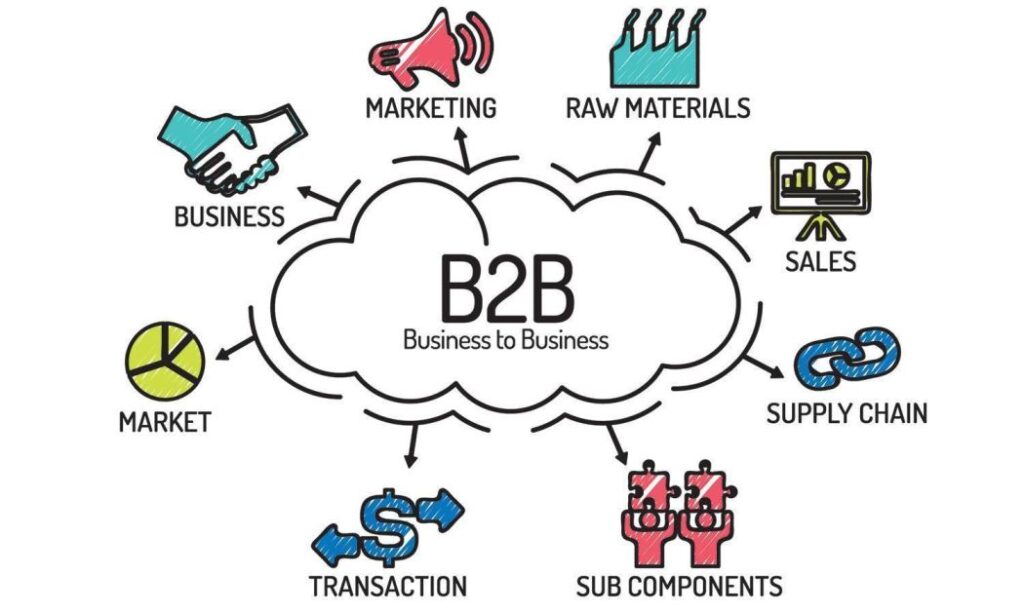Introduction
In the ever-evolving landscape of digital business, B2B commerce platforms have emerged as important tools to increase efficiency, scalability, and profitability. Whether you’re a small enterprise or a large corporation, leveraging the right B2B commerce platform can transform your operations and provide a significant competitive advantage. This blog explores the essential strategies for choosing and optimizing a B2B commerce platform to unlock the full potential of your business.
1. Understanding the B2B Commerce Ecosystem

B2B commerce platforms are designed to manage complex business transactions and streamline interactions between companies. Unlike B2C platforms, which focus on direct consumer sales, B2B solutions handle bulk orders, complex pricing structures, and multi-layered supply chains. They are integral in optimizing purchasing processes, managing inventory, and facilitating sales at scale.
2. Assessing Platform Requirements
Before choosing a B2B commerce platform, assess the specific needs and objectives of your business. Consider the following factors.
A. Need for integration
Make sure the platform integrates trimly with your existing systems, such as ERP, CRM, and accounting software. Effective integration increases data consistency, reduces manual entry errors and improves operational efficiency.
B. Scalability
Choose a platform that can grow with your business. It must handle increasing volumes of transactions, adapt to changing business models and support additional features as needed.
C. user experience
A user-friendly interface is important for both internal users and external partners. The platform should offer intuitive navigation, customizable dashboards, and responsive design to facility interactions.
D. Security and Compliance
Security is paramount in B2B transactions. Choose a platform with strong security features, such as data encryption, secure payment processing, and compliance with relevant regulations like GDPR or CCPA.
3. Platform Implementation: Best Practices

To ensure a successful platform implementation, start by defining clear objectives and gathering detailed requirements to understand the needs and expectations. Choose a platform that aligns with your business goals and is compatible with existing systems. Develop a thorough implementation plan that includes a roadmap, resource allocation, and budget management, and engage stakeholders early to gain their support. Invest in comprehensive training and provide ongoing support to facilitate user adoption. Before going live, conduct extensive testing and consider a phased rollout to address any issues. After launch, continuously monitor performance, gather feedback, and optimize the platform to adapt to changing needs, while implementing a strong change management strategy to manage resistance and ensure smooth adoption.
A. Integration Plan
Work closely with your IT team and platform provider to ensure a smooth integration process. Perform thorough testing to identify and resolve potential issues before going live.
B. Train your team
Provide your team with comprehensive training to maximize the platform’s capability. This includes understanding how to use systems effectively, interpreting data analysis, and troubleshooting common problems.
C. Customize as per your needs
Take advantage of the platform’s customization options to align with your business processes. Tailor features like workflow, pricing structure, and user permissions to suit your specific needs.
D. Monitor and optimize
Regularly review the performance of the platform and collect feedback from users. Use analytics tools to track key metrics and identify areas for improvement. Continually optimize the platform to increase its efficiency and effectiveness.
4. Leveraging Data for Strategic Decisions

The most important benefit of a B2B commerce platform is its ability to provide valuable insights through data analytics. Here’s how to leverage data effectively:
A. Track key metrics
Monitor metrics such as order volume, customer acquisition costs, and average transaction value. Analysis of these metrics helps you understand performance trends and make informed decisions.
B. Analyze customer behavior
Use data to gain insight into customer preferences, purchasing patterns, and pain points. This information can inform your sales strategies, marketing campaigns and product offerings.
C. Forecast Trends
Use predictive analytics to anticipate market trends and customer needs. This foresight is capable ability you to proactively adjust your strategies and stay ahead of the competition.
D. Customize Pricing Strategies
Analyze pricing data to refine your pricing model. Dynamic price, quantity discounts and personalized offers can increase your competitiveness and profitability.
5. Adoption of technological innovations
The B2B commerce landscape is constantly evolving with technological advancements. Stay ahead of the turnover by adopting innovative technologies that enhance your platform’s capabilities:
A. Artificial Intelligence
AI can automate routine tasks, personalize interactions with customers, and provide predictive insights. Apply AI-power tools to chatbot recommendation engines, and demand forecasting.
B. Machine Learning
ML algorithms can analyze large amounts of data to identify patterns and trends. Use ML for dynamic pricing, inventory management, and fraud detection.
C. Blockchain Technology
Blockchain enhances transaction security and transparency. It can be used for secure payment processing, supply chain tracking, and smart contracts.
D. Cloud computing
Cloud-based platforms provide scalability, flexibility, and cost efficiency. Option for a cloud-based B2B commerce solution to ensure your platform can adapt to changing needs and support remote access.
6. Shaping the Future of Your B2B Commerce Strategy





3 thoughts on “Credible And Profitable: The Ultimate B2B Commerce Platform”
Comments are closed.